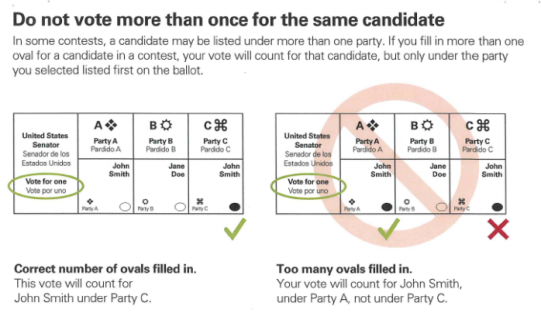Flash usability testing for double votes in New York
On a Saturday in October 2010, a group of volunteers fanned out to five locations across the city to run a usability test to learn how New Yorkers marked their new optical scan ballots, especially looking for a kind of error called “double voting” (voting for one candidate under more than one party).
Our goal was to improve voter education, election procedures, and how voters are informed about possible errors on their ballots.
The research challenge was working quickly so the The Brennan Center had data as input for their advocacy work.
Our solution was what we call flash testing. We go where the voters are, fanning out to places like libraries, farmers markets, and street corners. But instead of just gathering opinions, we asked them to sit down for ten minutes and try marking a ballot.
The day started by getting everyone together for a briefing, making sure that all of the teams worked in a consistent way and were gathering the same data. We also wanted to make sure that the professionals volunteers who had never worked in civic design understood the importance of being strictly non-partisan and welcoming diverse participants to the usability testing.
By the end of four hours in the field,we’d watched over 200 people. We’d collected enough marked ballots to analyze them for errors and places where people had struggled to understand how to mark their ballot accurately.
And, we had some ideas for how to explain to voters how to avoid making a mistake on their ballot.

The voter education flyers said: “Do not voter more than once for the same candidate. In some contests, a candidate may be listed under more than one party. If you fill in more than one oval for a candidate in a contest, your vote will count for that candidate, but only under the party you selected first on the ballot. ” Then it showed a correctly marked ballot, and explains how the vote will be counted
A year later, the Board of Elections agreed to
- Set up the ballot scanners to alert voters when they have double votes
- Post a notice in all the polling places that explains double voting
- Train poll workers, with a consistent procedure
- Report the number of double votes that are recorded

